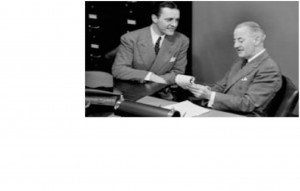Legally Blonde – Movies For Lawyers – The Act Of Communication Point Of View
From Katherine:
I know, you were really hoping that instead of giving you new information about an attorney favorite for the Dog Days of Summer that I would write about the new Smurf movie. Actually, one of the guys in my playwrighting group tried to convince me that I should go because he claimed there is a new character called “Legal Smurf”. Thank God I’m not that blonde.
Okay. I love LEGALLY BLONDE. Love it! I find it amazing that when I ask attorneys what their favorite movie about the law is that they don’t all shout out that title in their top hits. I love the story of Elle Woods (played by the extraordinary Reese Witherspoon learning that her skills of being sharp, savvy, compassionate and discerning can be used to help others by becoming an attorney.
But why I want you to watch it this time around (other than to have a fabulously rollicking time) is that I often use this film as a homework assignment for witnesses. With many witnesses, answering “too quickly” is an issue. People get nervous, the stakes are high, and they tend to “speak first and think second”. After I help cure them of the habit, I recommend that they watch the film, paying close attention to the cross examination of Enrique (the brilliant Greg Serano) by Emmett (the wonderful Luke Wilson).
The following dialogue is delivered at breakneck speed:
Emmett: Did you take Mrs. Windham on a date?
Enrique Salvatore: Yes.
Emmett: Where?
Enrique Salvatore: A restaurant in concord, where no one could recognize us.
Emmett: How long have you been sleeping with Mrs. Windham?
Enrique Salvatore: Three months.
Emmett: And your boyfriend’s name is…
Enrique Salvatore: Chuck.
Emmett: Right.
[Everyone gasps/laughs]
Enrique Salvatore: Pardon me, pardon me. I thought you said friend; Chuck is just a friend.
Chuck: YOU BITCH.
I can’t tell you how often any speedy witness “gets it” from watching this scene. We all have a good laugh and the lesson is solidified thanks to Enrique. I am happy to report that in the stage play based on the movie, LEGALLY BLONDE THE MUSICAL, that scene gets a big laugh every night. Even though we all know it is coming, the audience still gets the biggest kick out of it! I think we all recognize that “speed kills” each and every time we experience it in this scene – whether on stage or screen.
TIP: Help your speedy witnesses by having them watch the cross examination scene from LEGALLY BLONDE.



